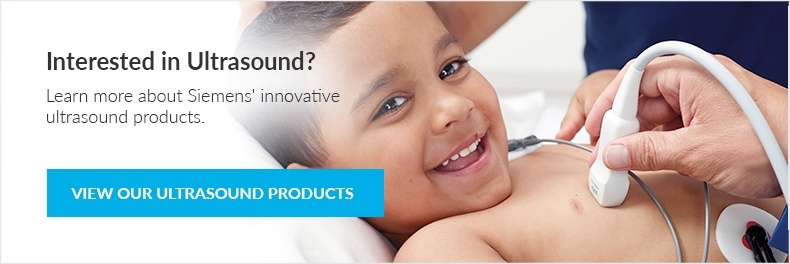 Whether you are part of an independent facility, small-town hospital or a large healthcare system, your ultrasound fleet may consist of diverse brands, models and versions, owing to the myriad of functions you need to perform.
Whether you are part of an independent facility, small-town hospital or a large healthcare system, your ultrasound fleet may consist of diverse brands, models and versions, owing to the myriad of functions you need to perform.
Even if you don’t have ownership over multiple systems, your organization likely does, when you consider units from radiology, cardiology, the ED and everywhere in between. Add to this the evolution of ultrasound technology—even within the same system model over several years—and you can easily end up with several variations within your department or organization.
Standardizing your ultrasound units with one vendor can greatly reduce the degree of system diversity and many of the problems that such a wide array of technology can create. Plus, it can produce cost savings in several areas—some more easily quantified than others.
Here are the key benefits of standardizing your ultrasound units—no matter how small or large your fleet may be.
- Improved Operational Efficiency
Sonographers and clinicians who operate ultrasound systems become accustomed to the controls, displays and “feel” of a system. Standardizing fleet segments allows your staff to become familiar with systems throughout a department, thus becoming more productive.
For example, they learn the keystrokes, clicks and overall workflow of a given system, which means they are more confident, have fewer rescans and—most importantly—are more focused on the patient experience. This also provides departments with greater flexibility in cross training and filling assignments for sick days or employee turnover.
- More Patient-Centered Care
Because your staff will spend less time negotiating the quirks and idiosyncrasies of a disparate fleet of systems, they can spend more time really getting to know the patient. Fleets using the same technology, aligning all employees around a common workflow, can facilitate a greater degree of patient interaction than ever before.
Those patients’ experiences will benefit not just from increased dialogue and attention from your imaging team, but from a lesser number of rescans, reduced wait times, and an increase in the overall speed of their appointment.
- Improved Service Maintenance Proficiency
The complexity of ultrasound systems is increasing with the addition of new technology, new devices, safety protocols and software enhancements. This learning curve for in-house bio-med/service technicians can be reduced by limiting the variety of new systems.
Proficiency by your biomed team is largely a function of solid training and experience, so a standardized fleet can expect quicker repairs and fewer mistakes, all other factors being equal. Plus, if you employ vendor-provided service maintenance, using one vendor simplifies the number of phone calls you must make when systems go down.
- Fewer Contracts and Invoices to Process
Less variety within your ultrasound fleet can mean fewer sources of OEM parts, fewer warranty claim processes to qualify for, fewer contracts to monitor and fewer sources of invoices. These seemingly small administrative issues can consume more staff time and effort than you might expect—large departments or organizations might even be able to eliminate an overhead position.
- Fewer Upgrades and Spare Part Purchases
Software updates and subscriptions can be an expensive, recurring cost. To an equal extent, so can unique, spare transducers or other parts for different systems. Saving a few thousand dollars a year by reducing the variety of systems and transducers across your organization can free up some dollars in a tight budget. In addition, having fewer software enhancements to schedule can also lessen the perpetual cycle of upgrades and the headaches that go with them.
- Closer Vendor Relations
Imaging vendors can become effective partners in delivering equipment and supplemental services to your various departments, staff and stakeholders. Long-term partnerships foster good working relationships, a situation more likely to develop if a fleet is standardized.
- Faster Specification and Bid Evaluation
Once segments of a fleet are standardized, the workload for each new purchase can be significantly less difficult and time-consuming.
- Proven Reliability
There is no guarantee that a manufacturer’s line of products will maintain its quality over the years. However, an assurance of quality may be more likely with one manufacturer versus trying every new product that hits the market and bids low.
Your ultrasound system replacement schedule is built on expectations of a predictable lifecycle. Historical experience is a good indicator upon which to base that prediction.
Standardizing your ultrasound fleet is a straightforward way to reduce costs, increase efficiency and create a more patient-centric experience. If your department or organization currently operates a variety of systems, the benefits of standardization might be too good to ignore.








Comments